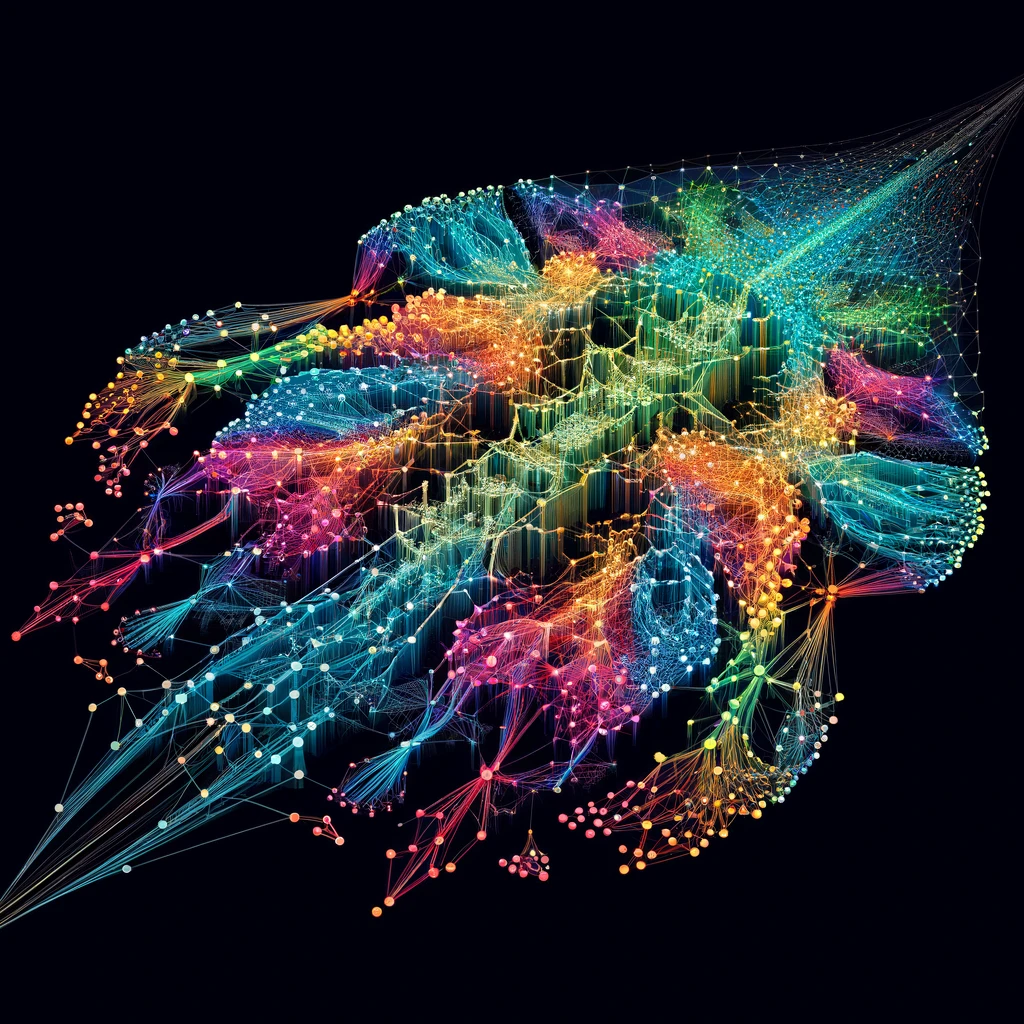
09. June 2024
Kolmogorov Arnold networks
Interpretation-oriented deep neural networks focused on activation functions
Introduction
Kolmogorov-Arnold Neural networks represent a sophisticated approach in the realm of neural networks, leveraging the theoretical foundations provided by the Kolmogorov-Arnold representation theorem.
What are Kolmogorov-Arnold Neural Networks?
KAN models are based on the Kolmogorov-Arnold representation theorem, which asserts that any multivariate continuous function can be represented as a superposition of continuous functions of a single variable and addition. This powerful theorem underpins the design of KAN models, enabling them to approximate complex functions by breaking them down into simpler, univariate functions.
The Concept Behind KAN Models
The Kolmogorov-Arnold representation theorem states that for any continuous function \( f: [0,1]^n \to \mathbb{R} \), there exist continuous functions \( \phi_i: \mathbb{R} \to \mathbb{R} \) and \( \psi_{ij}: \mathbb{R} \to \mathbb{R} \) such that:
\[ f(x_1, x_2, \ldots, x_n) = \sum_{i=1}^{2n+1} \phi_i \left( \sum_{j=1}^{n} \psi_{ij}(x_j) \right) \]
This theorem implies that a multivariate function can be decomposed into a sum of univariate functions, which simplifies the approximation process in neural networks.
Methodology
The methodology of KAN models involves several key steps:
Function Decomposition
Decompose the target multivariate function into univariate functions as per the Kolmogorov-Arnold theorem.
Network Architecture Design
Design a neural network architecture that reflects the decomposition. This typically involves two layers:
Inner Layer:
Computes the univariate functions \( \psi_{ij}(x_j) \) for each input variable.
Outer Layer
Aggregates the results of the inner layer using the univariate functions \( \phi_i \) to produce the final output.
Training Process
Train the network using standard backpropagation techniques, ensuring that the network learns the appropriate univariate functions and their aggregation.
Function Approximation
Use the trained network to approximate the target function, leveraging the theoretical guarantees provided by the Kolmogorov-Arnold representation.
Technical Details
✔ Network Architecture
Inner Layer
The inner layer consists of neurons that compute the functions \( \psi_{ij}(x_j) \). Each neuron in this layer corresponds to a particular univariate function and processes a single input variable.
Outer Layer
The outer layer aggregates the outputs of the inner layer. Each neuron in this layer computes a function \( \phi_i \) that takes a sum of the outputs from the inner layer as its input.
✔ Mathematical Formulation
Let \( \mathbf{x} = (x_1, x_2, \ldots, x_n) \) be the input vector.
The inner layer computes \( \mathbf{h} = (\psi_{11}(x_1), \psi_{12}(x_1), \ldots, \psi_{1n}(x_n), \ldots, \psi_{(2n+1)n}(x_n)) \).
The outer layer then computes the final output as \( f(\mathbf{x}) = \sum_{i=1}^{2n+1} \phi_i \left( \sum_{j=1}^{n} \psi_{ij}(x_j) \right) \).
✔ Training
Objective Function
The objective function is typically a loss function that measures the difference between the network's output and the target function's value.
Optimization
Gradient-based optimization methods such as stochastic gradient descent (SGD) are used to minimize the loss function and adjust the network's weights.
Function Translation Using Specific Functions
To translate the model into a function that links inputs to outputs for scientific interest, specific functions such as sinus, cosinus, \(x^2\), \(x^3\), etc., can be used. This process involves:
Function Selection:
Choose specific functions (e.g., sinus, cosinus, \(x^2\), \(x^3\)) to represent the univariate functions \( \psi_{ij}(x_j) \).
Network Training:
Train the network with these specific functions, ensuring they are incorporated into the architecture during the learning process.
Output Translation:
The final network output can then be interpreted as a combination of these specific functions, providing a clear and scientifically interpretable link between inputs and outputs.
Advantages and Limitations
✔ Advantages
Theoretical Foundation
The Kolmogorov-Arnold theorem provides a strong theoretical foundation for the network's ability to approximate any continuous function.
Function Approximation
KAN models are particularly effective for approximating complex multivariate functions by decomposing them into simpler components.
✔ Limitations
Complexity
The decomposition into univariate functions can increase the complexity of the network architecture.
Computational Cost
The training process can be computationally intensive, especially for high-dimensional input spaces.
References
- (Article) KAN: Kolmogorov-Arnold Networks, Z. Liu, Y. Wang, S. Vaidya, F. Ruehle, J. Halverson, M. Soljačić, T. Y. Hou, M. Tegmark | Website
- (Article) Kolmogorov-Arnold Networks (KANs) for Time Series Analysis, C. J. Vaca-Rubio, L. Blanco, R. Pereira, M. Caus | Website
- (Article) Smooth Kolmogorov Arnold networks enabling structural knowledge representation, M. E. Samadi, Y. Müller, A. Schuppert | Website
- (Article) DeepOKAN: Deep Operator Network Based on Kolmogorov Arnold Networks for Mechanics Problems, D. W. Abueidda, P. Pantidis, M. E. Mobasher | Website
- (Article) A First Look at Kolmogorov-Arnold Networks in Surrogate-assisted Evolutionary Algorithms, H. Hao, X. Zhang, B. Li, A. Zhou | Website
